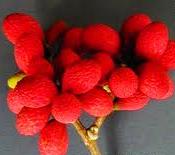The santol ( sandorica) (Sandoricum koetjape, syn. S. indicum and S. nervosum) is a tropical fruit grown in southeast Asia.
The Santol is believed native to former Indochina andPeninsular Malaysia, and to have been introduced into India,Borneo, Indonesia, the Moluccas, Mauritius, and thePhilippines where it has become naturalized. It is commonly cultivated throughout these regions and the fruits are seasonally abundant in the local markets.
Health Benefits of Santol
- The root is mixed with the bark of Carapa obovata Blume, and used to combat leucorrhea.
- Crushed leaves are poulticed on itching skin.
- The aromatic, astringent root also serves the latter purpose, and is a potent remedy for diarrhea.
- Fever cure, fresh leaves are placed on the body to cause sweating and the leaf decoction is used to bathe the patient.
- The bitter bark, containing the slightly toxic sandoricum acid, an unnamed, toxic alkaloid, and a steroidal sapogenin, is applied on ringworm and also enters into a potion given a woman after childbirth.
- Root is crushed and blend with vinegar and water which is then given as a carminative and remedy for diarrhea and dysentery.
- An infusion of the fresh or dried root, or the bark, may be taken to relieve colic and stitch in the side.
- The root is a stomachic and antispasmodic and prized as a tonic.

